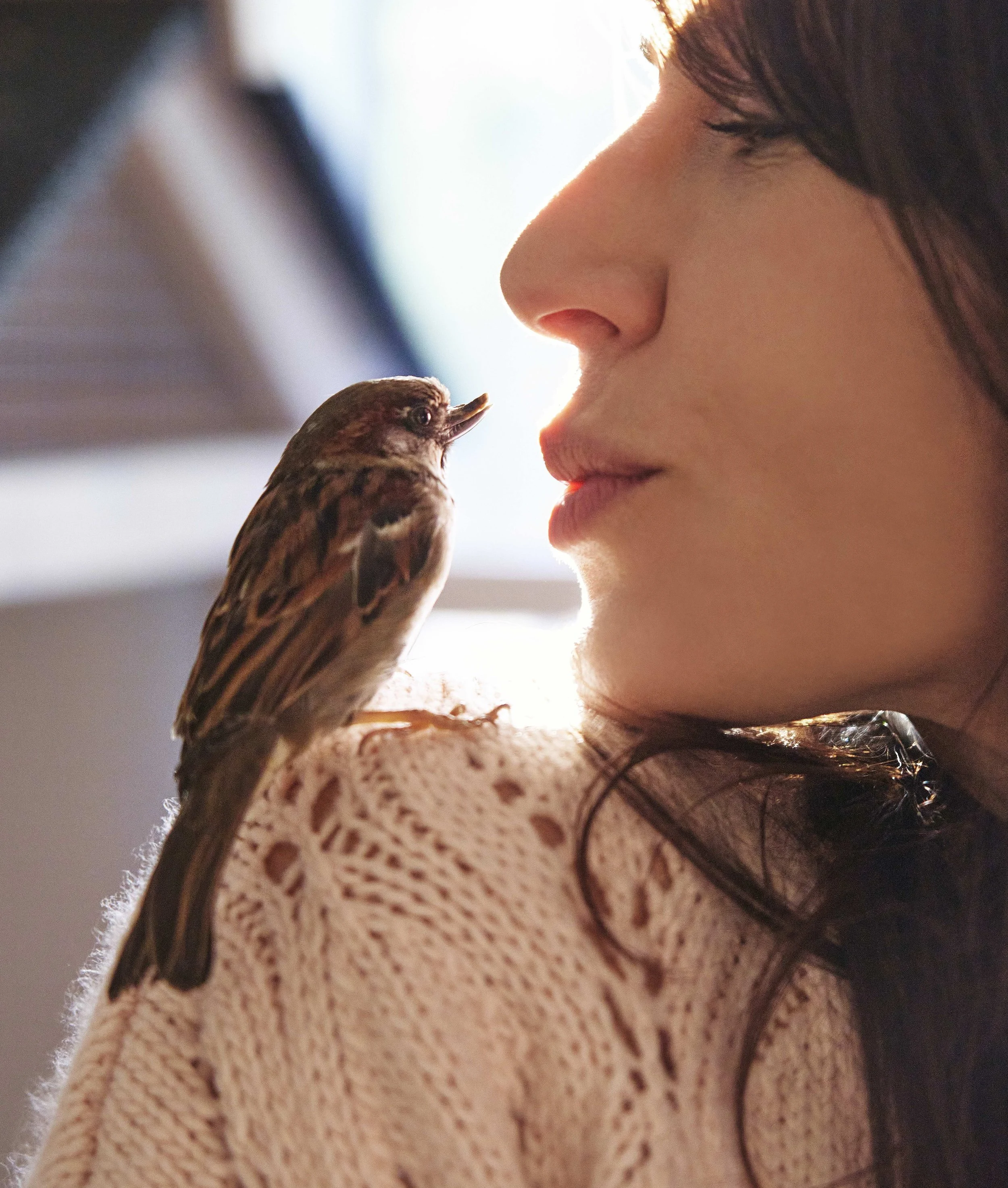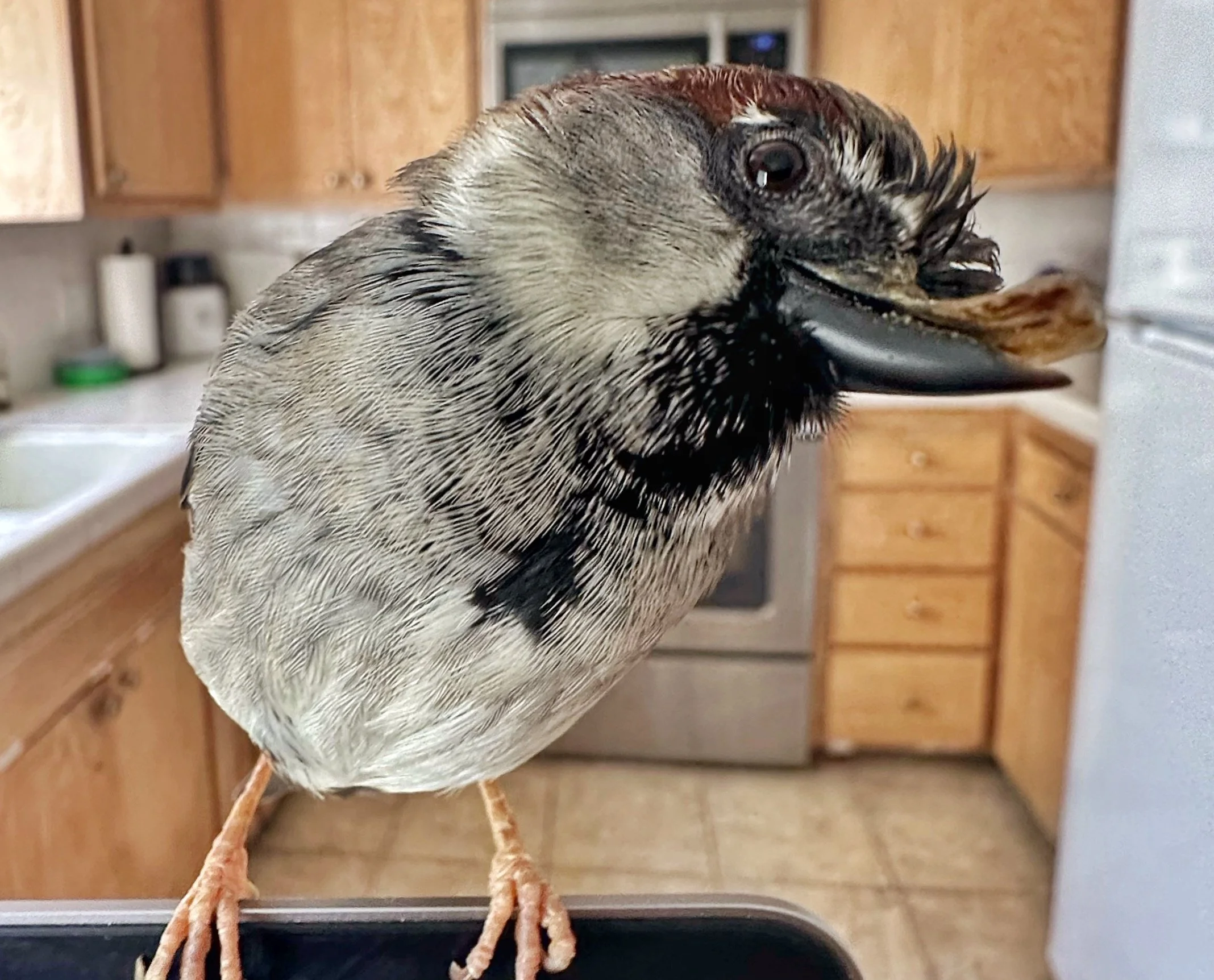Happy’s story
Happy was only a day old when he fell from his nest and was rescued. Against all odds, this tiny sparrow survived—and in doing so, touched hearts around the world. His story of resilience, love, and second chances quickly spread, reaching millions through social media and beyond.
When Maria found him, Happy had a severe injury to his upper beak that left him with a lifelong deformity—making him the only smiling sparrow in the world. But rather than let his difference hold him back, Happy turned it into his superpower, becoming a living symbol of courage and joy.
What began as one fragile bird’s fight to survive has blossomed into something extraordinary: a global movement rooted in kindness, connection, and hope. Happy’s journey has inspired a beloved children’s book, an award-winning documentary, and a worldwide kindness campaign that brings people together through compassion and community.
Today, Happy continues to remind us that even the smallest acts of care can create ripples that travel farther than we ever imagine.
A FEW FUN FACTS ABOUT HOUSE SPARROWS
Small but Strong:
House sparrows typically weigh between 24 and 39.5 grams (0.85–1.39 ounces)—about the same as four U.S. quarters, or one dollar in coins! Despite their tiny size, they’re tough and full of personality.Meet Happy – A Male House Sparrow:
You can tell Happy is a male house sparrow by the distinct black “bib” under his chin and the gray crown on his head. Female sparrows look different—they’re usually lighter brown with no black markings and have a more subtle, sandy coloration.Tiny but Mighty:
House sparrows are small songbirds that rarely weigh more than an ounce, yet they can endure all kinds of weather and environments.Global Citizens:
Found across almost every continent, house sparrows are among the most widespread wild birds in the world. They thrive wherever people are—from big cities to small farms.Social Birds:
Sparrows are gregarious year-round. They love company—feeding, roosting, and even taking dust baths together in lively flocks.Fast Flyers:
House sparrows can fly at speeds of around 28 miles per hour (45 kilometers per hour)—not bad for a bird the size of a golf ball!Dust Bathers:
Instead of showers, sparrows take dust baths! They wiggle and fluff their feathers in dry soil to remove dirt and parasites and keep their plumage in top shape.Ground Feeders:
Sparrows prefer to hop and peck on the ground for seeds, crumbs, and grains, often near humans who unknowingly share their snacks.Urban Adapters:
House sparrows are incredibly adaptable. They make their homes in roofs, vents, bushes, and streetlights—anywhere they can find shelter and friends.Symbols of Resilience:
Throughout history, sparrows have symbolized hope, simplicity, and strength. They remind us that even the smallest creatures can make a big difference.




